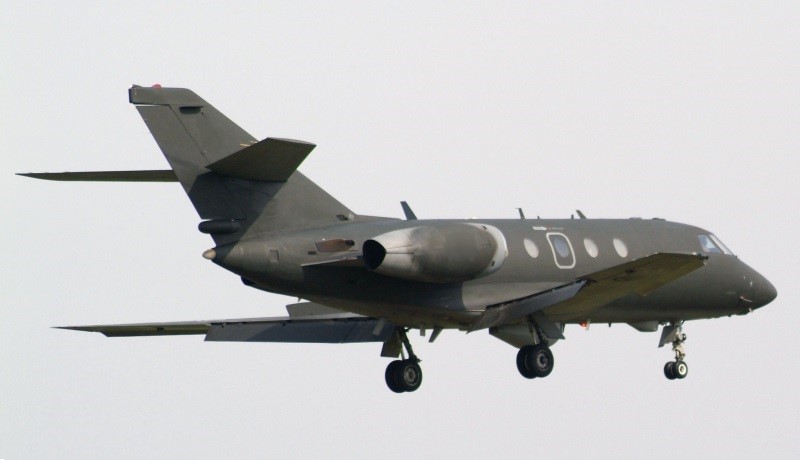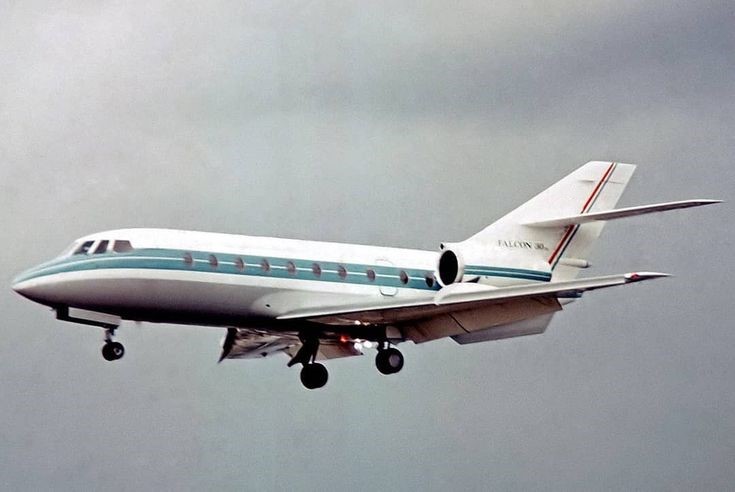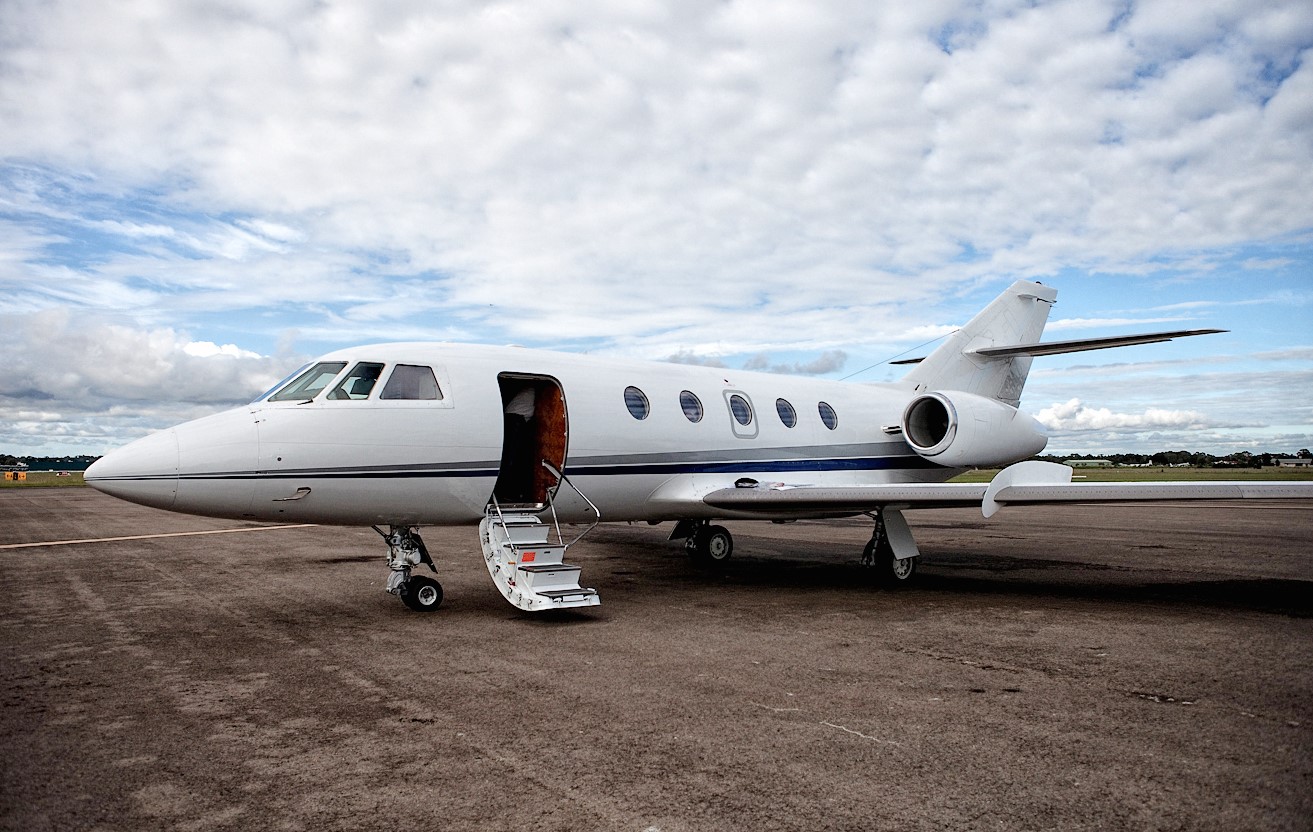The History of the Dassault Falcon 20 and Falcon 30: A Legacy of Excellence in Business Aviation

The History of the Dassault Falcon 20 and Falcon 30: A Legacy of Excellence in Business Aviation
In the world of business aviation, few aircraft have left as lasting an impression as the Dassault Falcon 20 and its lesser-known sibling, the Falcon 30. These aircraft, developed by the French aerospace company Dassault Aviation, played a crucial role in shaping the modern business jet industry. Their story is one of innovation, adaptability, and enduring performance—a legacy that continues to influence the private aviation sector today.

The Birth of the Falcon 20: A Game-Changer for Business Aviation
The Falcon 20 was conceived in the late 1950s as part of Dassault’s efforts to expand beyond military aircraft. At the time, Dassault was known primarily for its Mirage fighter jets, but company founder Marcel Dassault recognized the growing demand for executive transport. The result was the Mystère 20, later rebranded as the Falcon 20—a sleek, mid-sized jet designed to offer speed, range, and comfort for business travelers.
Dassault’s engineers drew heavily from their experience with military aircraft, incorporating advanced aerodynamics and robust structural integrity into the Falcon 20’s design. The aircraft featured a low-wing configuration, twin rear-mounted General Electric CF700 turbofan engines, and a pressurized cabin capable of seating up to ten passengers. It was designed for high-speed, long-range travel, making it ideal for corporate executives and government officials.

Initial Success and North American Expansion
The Falcon 20 first took to the skies on May 4, 1963, and it quickly garnered attention for its impressive performance. The aircraft’s top speed of around 500 mph and a range of over 2,000 miles set a new standard for business jets at the time. Recognizing the Falcon 20’s potential in the lucrative North American market, Dassault partnered with Pan American World Airways, which became the exclusive distributor for the aircraft in the United States.

This partnership proved instrumental in securing the Falcon 20’s success. The aircraft was well-received by corporations, private owners, and even the U.S. military. The U.S. Coast Guard and Federal Express (FedEx) were among the most notable operators. In fact, FedEx founder Fred Smith chose the Falcon 20 as the backbone of his air cargo fleet in the early 1970s, using it to launch what would become one of the world’s largest overnight delivery services.
The Evolution of the Falcon 20: Variants and Upgrades
Over the years, Dassault continued to refine the Falcon 20, introducing various improvements and new variants. The most significant upgrade came with the Falcon 20C and Falcon 20F, which featured more powerful engines, increased fuel capacity, and enhanced avionics. The introduction of the Garrett TFE731 engine in later models dramatically improved fuel efficiency and reduced noise levels, making the aircraft more environmentally friendly and cost-effective to operate.
Additionally, Dassault developed specialized versions of the Falcon 20 for military applications, including electronic warfare, reconnaissance, and maritime patrol. These adaptations underscored the aircraft’s versatility and ability to meet diverse operational requirements.

Enter the Falcon 30: A Larger, More Capable Successor
Building on the success of the Falcon 20, Dassault explored the possibility of creating a larger version that could accommodate more passengers and offer greater range. This led to the development of the Falcon 30, an extended version designed to compete with other midsize business jets.
The Falcon 30 featured a stretched fuselage, allowing for increased seating capacity and a more spacious cabin. It was intended to offer an even more comfortable and luxurious experience for executive travelers. However, despite its promise, the Falcon 30 faced challenges in terms of market demand. At the time, the business aviation industry was shifting toward larger, long-range jets, and the Falcon 30 struggled to carve out a niche between the established Falcon 20 and emerging larger aircraft models.
As a result, the Falcon 30 never saw the same level of commercial success as its predecessor. While Dassault ultimately decided not to proceed with full-scale production, the Falcon 30 played a key role in shaping the company’s future aircraft development strategies.

The Lasting Legacy of the Falcon 20 and Falcon 30
Despite the Falcon 30’s limited success, the Falcon 20 left an indelible mark on the business jet industry. It was one of the first aircraft to demonstrate that business aviation could offer the speed and convenience of commercial air travel while providing the privacy and efficiency required by corporate executives.
The Falcon 20 also served as a technological foundation for Dassault’s subsequent Falcon jets. Many of the design principles and engineering advancements pioneered in the Falcon 20 carried over to later models, including the Falcon 50, Falcon 900, and the ultra-modern Falcon 7X and Falcon 8X. Dassault’s commitment to innovation, high-performance engineering, and passenger comfort can all be traced back to the pioneering work done on the Falcon 20 program.

The Falcon 20 Today: A Classic Still in Service
More than half a century after its maiden flight, the Falcon 20 remains a respected aircraft in the aviation world. Many have been upgraded with modern avionics, new engines, and cabin refurbishments, allowing them to continue flying in corporate and specialized roles. Some have even been converted into firefighting aircraft, proving the Falcon 20’s adaptability and enduring reliability.
For aviation enthusiasts, the Falcon 20 holds a special place in history as one of the first business jets to achieve widespread success. For charter companies, it serves as a reminder of how far the industry has come, and how innovation in aircraft design continues to shape the future of private air travel.
Conclusion: A Milestone in Business Aviation
The story of the Dassault Falcon 20 and Falcon 30 is one of ambition, ingenuity, and lasting impact. The Falcon 20, in particular, revolutionized the business jet market, setting new standards for performance and reliability. While the Falcon 30 did not achieve the same level of recognition, its development contributed valuable insights that helped shape later aircraft designs.

For those in the private aviation industry, these aircraft represent more than just engineering achievements—they symbolize the evolution of executive air travel and the continued pursuit of excellence. Whether looking back at their history or considering their influence on today’s cutting-edge jets, the Falcon 20 and Falcon 30 remain iconic milestones in the journey of business aviation.

TriStar inspires!
It Might Also Be Interesting

Subscribe Now to TriStar Blog
Zero spam. Unsubscribe at any time.

TriStar 24/7 Call Center
E-Mail Support
TriStar Charters & Concierge arranges flights on behalf of our clients with FAA Certified FAR Part 135 direct air carriers that exercise full operational control of charter flights at all times. All flights purchased on our platform will be operated by FAR Part 135 direct air carriers that have been certified to provide service for the TriStar Charters & Concierge company clients and that meet all FAA safety standards. Your itinerary will clearly state the name of the certified operator conducting your flight.




